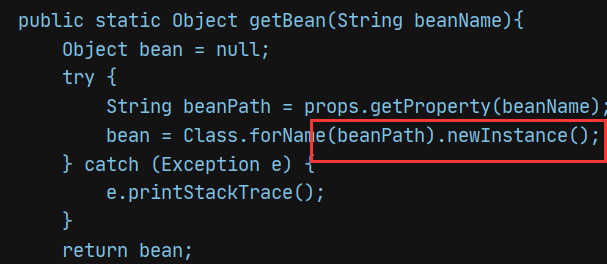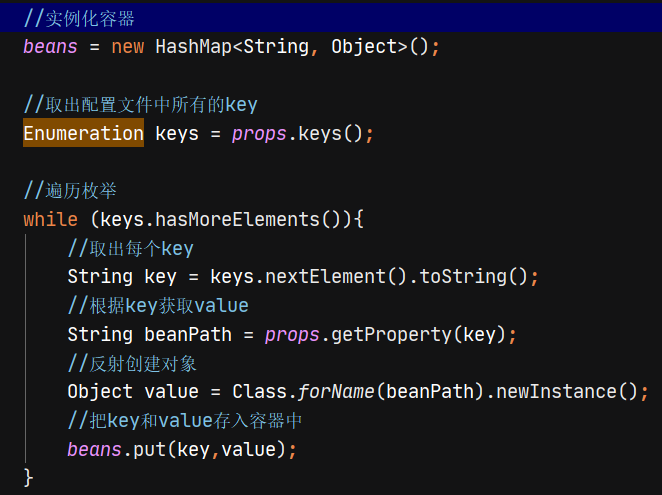一、spring的优势(面试的时候可以多讲讲哦!)
方便解耦,简化开发
通过 Spring 提供的 IoC 容器,可以将对象间的依赖关系交由 Spring 进行控制,避免硬编码所造成的过度程序耦合。用户也不必再为单例模式类、属性文件解析等这些很底层的需求编写代码,可以更专注于上层的应用。
AOP 编程的支持
通过 Spring 的 AOP 功能,方便进行面向切面的编程,许多不容易用传统 OOP 实现的功能可以通过 AOP 轻松应付
声明式事务的支持
可以将我们从单调烦闷的事务管理代码中解脱出来,通过声明式方式灵活的进行事务的管理,提高开发效率和质量。
方便程序的测试
可以用非容器依赖的编程方式进行几乎所有的测试工作,测试不再是昂贵的操作,而是随手可
做的事情。
方便集成各种优秀框架
Spring 可以降低各种框架的使用难度,提供了对各种优秀框架(Struts、Hibernate、Hessian、Quartz等)的直接支持。
降低 JavaEE API 的使用难度
Spring 对 JavaEE API(如 JDBC、JavaMail、远程调用等)进行了薄薄的封装层,使这些 API 的使用难度大为降低。
Java 源码是经典学习范例
Spring 的源代码设计精妙、结构清晰、匠心独用,处处体现着大师对 Java 设计模式灵活运用以及对 Java 技术的高深造诣。它的源代码无意是 Java 技术的最佳实践的范例。

二、Ioc的概念+作用(核心部分!!!)
1.程序的耦合(当看小说看看吧,反正也不长)
耦合性(Coupling),也叫耦合度,是对模块间关联程度的度量。耦合的强弱取决于模块间接口的复杂性、调用模块的方式以及通过界面传送数据的多少。模块间的耦合度是指模块之间的依赖关系,包括控制关系、调用关系、数据传递关系。模块间联系越多,其耦合性越强,同时表明其独立性越差( 降低耦合性,可以提高其独立性)。耦合性存在于各个领域,而非软件设计中独有的,但是我们只讨论软件工程中的耦合。
在软件工程中,耦合指的就是就是对象之间的依赖性。对象之间的耦合越高,维护成本越高。因此对象的设计应使类和构件之间的耦合最小。软件设计中通常用耦合度和内聚度作为衡量模块独立程度的标准。划分模块的一个准则就是高内聚低耦合。
它有如下分类:
(1)内容耦合。当一个模块直接修改或操作另一个模块的数据时,或一个模块不通过正常入口而转入另一个模块时,这样的耦合被称为内容耦合。内容耦合是最高程度的耦合,应该避免使用之。
(2)公共耦合。两个或两个以上的模块共同引用一个全局数据项,这种耦合被称为公共耦合。在具有大量公共耦合的结构中,确定究竟是哪个模块给全局变量赋了一个特定的值是十分困难的。
(3) 外部耦合 。一组模块都访问同一全局简单变量而不是同一全局数据结构,而且不是通过参数表传递该全局变量的信息,则称之为外部耦合。
(4) 控制耦合 。一个模块通过接口向另一个模块传递一个控制信号,接受信号的模块根据信号值而进行适当的动作,这种耦合被称为控制耦合。
(5)标记耦合 。若一个模块 A 通过接口向两个模块 B 和 C 传递一个公共参数,那么称模块 B 和 C 之间存在一个标记耦合。
(6) 数据耦合。模块之间通过参数来传递数据,那么被称为数据耦合。数据耦合是最低的一种耦合形式,系统中一般都存在这种类型的耦合,因为为了完成一些有意义的功能,往往需要将某些模块的输出数据作为另一些模块的输入数据。
(7) 非直接耦合 。两个模块之间没有直接关系,它们之间的联系完全是通过主模块的控制和调用来实现的。
总结:
耦合是影响软件复杂程度和设计质量的一个重要因素,在设计上我们应采用以下原则:如果模块间必须存在耦合,就尽量使用数据耦合,少用控制耦合,限制公共耦合的范围,尽量避免使用内容耦合。
内聚与耦合
内聚标志一个模块内各个元素彼此结合的紧密程度,它是信息隐蔽和局部化概念的自然扩展。内聚是从功能角度来度量模块内的联系,一个好的内聚模块应当恰好做一件事。它描述的是模块内的功能联系。耦合是软件结构中各模块之间相互连接的一种度量,耦合强弱取决于模块间接口的复杂程度、进入或访问一个模块的点以及通过接口的数据。 程序讲究的是低耦合,高内聚。就是同一个模块内的各个元素之间要高度紧密,但是各个模块之间的相互依存度却要不那么紧密。
内聚和耦合是密切相关的,同其他模块存在高耦合的模块意味着低内聚,而高内聚的模块意味着该模块同其他模块之间是低耦合。在进行软件设计时,应力争做到高内聚,低耦合。
举例子:
(1)、早期的代码
public class AccountServiceImpl implements IAccountService {
private IAccountDao accountDao = new AccountDaoImpl();
}
分析:
业务层调用持久层,并且此时业务层在依赖持久层的接口和实现类。如果此时没有持久层实现类,编译将不能通过。这种编译期依赖关系,应该在我们开发中杜绝。我们需要优化代码解决。
(2)、JDBC
public static void main(String[] args) throws Exception {
//1.注册驱动
//DriverManager.registerDriver(new com.mysql.jdbc.Driver());
Class.forName("com.mysql.jdbc.Driver");
//2.获取连接
//3.获取预处理 sql 语句对象
//4.获取结果集
//5.遍历结果集
}
分析:
我们的类依赖了数据库的具体驱动类(MySQL),如果这时候更换了数据库品牌(比如 Oracle),需要修改源码来重新数据库驱动。这显然不是我们想要的。
解决思路:
当是我们讲解 jdbc 时,是通过反射来注册驱动的,代码如下:
Class.forName("com.mysql.jdbc.Driver");//此处只是一个字符串
此时的好处是,我们的类中不再依赖具体的驱动类,此时就算删除 mysql 的驱动 jar 包,依然可以编译(运行就不要想了,没有驱动不可能运行成功的)。
解耦思路:
1.使用反射创建对象,避免new 编译时期出错,
2.通过读取配置文件 获取要创建的对象全限定类名
同时,也产生了一个新的问题,mysql 驱动的全限定类名字符串是在 java 类中写死的,一旦要改还是要修改源码。
解决这个问题也很简单,使用配置文件配置。
2、工厂模式解耦
在实际开发中我们可以把三层的对象都使用配置文件配置起来,当启动服务器应用加载的时候,让一个类中的方法通过读取配置文件,把这些对象创建出来并存起来。在接下来的使用的时候,直接拿过来用就好了。
那么,这个读取配置文件,创建和获取三层对象的类就是工厂。
案例:
package com.itheima.factory;
import java.io.IOException;
import java.io.InputStream;
import java.util.Enumeration;
import java.util.HashMap;
import java.util.Map;
import java.util.Properties;
/**
* 创建bean对象的工厂
*
* Bean:在 计算机英语 ,可重用组件的含义
*
* JavaBean: 用java 语言编写的可重用组件
* javabean > 实体类
*
* 它就是创建我们的service和dao对象
*
* 第一:需要配置文件配置 我们的 service 和 dao
* 配置的内容,唯一标识==全限定类名(key=value)
* 第二:通过读取配置文件中 配置的内容 ,反射创建对象
*
* 我的配置文件 可以是xml,可以是 properties
*/
public class BeanFactory {
//定义一个Properites对象
private static Properties props;
//定义一个Map,用于存放我们要创建的对象,我们把它称之为容器
private static Map<String,Object> beans;
//使用静态代码快为Properties对象赋值
static {
try {
//实例化对象
props = new Properties();
//获取文件流对象
InputStream in = BeanFactory.class.getClassLoader().getResourceAsStream("bean.properties");
props.load(in);
//实例化容器
beans = new HashMap<String, Object>();
//取出配置文件中所有的key
Enumeration keys = props.keys();
//遍历枚举
while (keys.hasMoreElements()){
//取出每个key
String key = keys.nextElement().toString();
//根据key获取value
String beanPath = props.getProperty(key);
//反射创建对象
Object value = Class.forName(beanPath).newInstance();
//把key和value存入容器中
beans.put(key,value);
}
} catch (Exception e) {
throw new ExceptionInInitializerError("初始化 properties失败");
}
}
/**
* 根据bean的名称获取对象 (单例)
* @param beanName
* @return
*/
public static Object getBean(String beanName){
return beans.get(beanName);
}
/**
* 根据有bean的名称 获取bean对象
* @param beanName
* @return
*/
/*
public static Object getBean(String beanName){
Object bean = null;
try {
String beanPath = props.getProperty(beanName);
bean = Class.forName(beanPath).newInstance();
} catch (Exception e) {
e.printStackTrace();
}
return bean;
}*/
}
package com.itheima.service.impl;
import com.itheima.dao.IAccountDao;
import com.itheima.factory.BeanFactory;
import com.itheima.service.IAccountService;
/**
* 账户业务层实现类
*/
public class AccountServiceImpl implements IAccountService {
//业务层 调用持久层
// private IAccountDao accountDao = new AccountDaoImpl();
private IAccountDao accountDao = (IAccountDao) BeanFactory.getBean("accountDao");
public void saveAccount() {
int i =1;
accountDao.saveAccount();
System.out.println(i);
i++;
}
}
package com.itheima.dao.impl;
import com.itheima.dao.IAccountDao;
/**
* 持久层实现类
*/
public class AccountDaoImpl implements IAccountDao {
public void saveAccount() {
System.out.println("保存了,账户");
}
}
package com.itheima.ui;
import com.itheima.factory.BeanFactory;
import com.itheima.service.IAccountService;
import com.itheima.service.impl.AccountServiceImpl;
/**
* 模拟一个表现曾,用于调用业务层
*/
public class Client {
public static void main(String[] args) {
// IAccountService as = new AccountServiceImpl();
for (int i = 0; i < 5; i++) {
IAccountService as = (IAccountService) BeanFactory.getBean("accountService");
System.out.println(as);
as.saveAccount();
}
}
}
z这个案例呢,我是使用的properties解析配置文件,
//bean.properties
accountService=com.itheima.service.impl.AccountServiceImpl
accountDao=com.itheima.dao.impl.AccountDaoImpl
最开始出现了一个问题,



每次都会创建一个全新的对象。这个是多例情况
如果需要控制对象,单例,则需要使用容器



我代码中的这个部分很清晰了,注解也都很清晰
3、控制反转!(重点)
1、存哪去?
分析:由于我们是很多对象,肯定要找个集合来存。这时候有 Map 和 List 供选择。
到底选 Map 还是 List 就看我们有没有查找需求。有查找需求,选 Map。
所以我们的答案就是
在应用加载时,创建一个 Map,用于存放三层对象。
我们把这个 map 称之为容器。
2、还是没解释什么是工厂?
工厂就是负责给我们从容器中获取指定对象的类。这时候我们获取对象的方式发生了改变。
原来:
我们在获取对象时,都是采用 new 的方式。是主动的。








案例开始!开始敲代码啦!!讲解都在注释中
一、入门案例
bean类
<?xml version="1.0" encoding="UTF-8"?>
<beans xmlns="http://www.springframework.org/schema/beans"
xmlns:xsi="http://www.w3.org/2001/XMLSchema-instance"
xsi:schemaLocation="http://www.springframework.org/schema/beans
http://www.springframework.org/schema/beans/spring-beans.xsd">
<!--把对象的创建 交给spring来管理-->
<bean id="accountService" class="com.itheima.service.impl.AccountServiceImpl"></bean>
<bean id="accountDao" class="com.itheima.dao.impl.AccountDaoImpl"></bean>
</beans>
package com.itheima.dao.impl;
import com.itheima.dao.IAccountDao;
/**
* 持久层实现类
*/
public class AccountDaoImpl implements IAccountDao {
public void saveAccount() {
System.out.println("保存了,账户");
}
}
package com.itheima.service.impl;
import com.itheima.dao.IAccountDao;
import com.itheima.dao.impl.AccountDaoImpl;
import com.itheima.service.IAccountService;
/**
* 账户业务层实现类
*/
public class AccountServiceImpl implements IAccountService {
//业务层 调用持久层
private IAccountDao accountDao = new AccountDaoImpl();
public AccountServiceImpl(){
System.out.println("对象创建了");
}
public void saveAccount() {
int i =1;
accountDao.saveAccount();
System.out.println(i);
i++;
}
}
package com.itheima.ui;
import com.itheima.dao.IAccountDao;
import com.itheima.service.IAccountService;
import com.itheima.service.impl.AccountServiceImpl;
import org.springframework.beans.factory.BeanFactory;
import org.springframework.beans.factory.xml.XmlBeanFactory;
import org.springframework.context.ApplicationContext;
import org.springframework.context.support.ClassPathXmlApplicationContext;
import org.springframework.context.support.FileSystemXmlApplicationContext;
import org.springframework.core.io.ClassPathResource;
import org.springframework.core.io.Resource;
import javax.annotation.Resources;
/**
* 模拟一个表现曾,用于调用业务层
*/
public class Client {
/**
* 获取srping容器 IOC核心容器,并根据id获取对象
*
* ApplicationContext的三个常用实现类
* ClassPathXmlApplicationContext
* 它可以加载类路径下的配置文件
* 要求配置文件必须在类路径下
* FileSystemXmlApplicationContext
* 它可以加载磁盘任意路径下的配置文件(必须有访问权限)
*
* AnnotationConfigApplicationContext
* 它用于读取注解创建容器
*
* 核心容器的两个接口引发出的问题
* ApplicationContext: 使用场景:单例对象适用 (更多的采用此接口)
* 它在构建核心容器时,创建对象采取的策略时 立即加载,
* 也就是说 只要一读取完,就立马创建配置文件中的配置对象
*
* BeanFactory: 使用场景:多例对象适用
* 它在构建创建核心容器时,创建对象 采用延迟加载方式,
* 也就是说,什么时候根据id获取对象,什么时候才真正的创建对象
*
* @param args
*/
public static void main(String[] args) {
//1.获取核心容器对象
// ApplicationContext ac = new ClassPathXmlApplicationContext("bean.xml");
// ApplicationContext ac = new FileSystemXmlApplicationContext("C:\\Users\\78703\\Desktop\\bean.xml");
//2.根据id获取bean对象
//下面是两种方式
// IAccountService as = (IAccountService) ac.getBean("accountService");
// IAccountDao adao = ac.getBean("accountDao",IAccountDao.class);
// System.out.println(as);
// System.out.println(adao);
// as.saveAccount();
//-----------------------------------------------------
Resource resource = new ClassPathResource("bean.xml");
BeanFactory factory = new XmlBeanFactory(resource);
IAccountService as = (IAccountService) factory.getBean("accountService");
System.out.println(as);
}
}



二、bean的细节
<?xml version="1.0" encoding="UTF-8"?>
<beans xmlns="http://www.springframework.org/schema/beans"
xmlns:xsi="http://www.w3.org/2001/XMLSchema-instance"
xsi:schemaLocation="http://www.springframework.org/schema/beans
http://www.springframework.org/schema/beans/spring-beans.xsd">
<!--把对象的创建 交给spring来管理-->
<!--spring对bean的管理细节
1.创建bean的三种方式
2.bean对象的作用范围
3.bean对象的生命周期
-->
<!-- 创建bean的三种方式-->
<!--第一中,使用默认构造函数创建
在spring的配置文件中使用bean标签,配以id和class属性后,且没有其他属性标签
采用的就是默认构造函数创建bean对象
此时如果类中没有默认构造函数,则对象无法创建
<bean id="accountService" class="com.itheima.service.impl.AccountServiceImpl"></bean>
-->
<!-- 第二种方式,使用普通工厂中的方法创建对象
(使用某个类中的方法创建对象,并存入spring容器中)
<bean id="instanceFactory" class="com.itheima.factory.InstanceFactory"/>
<bean id="accountService" factory-bean="instanceFactory" factory-method="getAccountService"/>
-->
<!-- 第三种方式:使用工厂中的静态方法创建对象(使用某个类中的静态方法创建对象,并存入spring容器)
<bean id="accountService" class="com.itheima.factory.StaticFactory" factory-method="getAccountService"></bean>
-->
<!-- bean的作用范围调整 -->
<!--
spring 默认情况下是单例的 对象
bean标签的scope属性
作用:用于至于bean的作用范围
取值:常用 1.2.
singleton:单例的(默认值)
prototype:多例的
request:作用于web应用的请求范围
session:作用与web应用的会话范围
global-session:作用于集群环境的会话范围(全局会话范围)
当不是集群环境是,就是session
<bean id="accountService" class="com.itheima.service.impl.AccountServiceImpl" scope="prototype"></bean>
-->
<!-- bean对象的生命周期
单例对象
出生:当容器创建时对象出生
活着:容器还在,对象就一直活着
死亡:容器销毁,对象消亡
总结:单例对象的生命周期 和 容器相同
多例对象
出生:当我们使用对象时,spring为我们创建
活着:对象 只要在使用过程中就一直活着
死亡:当对象长时间不用,且没有别的对象引用,
由java的垃圾回收期回收
-->
<bean id="accountService"
class="com.itheima.service.impl.AccountServiceImpl"
scope="prototype"
init-method="init"
destroy-method="destroy"></bean>
</beans>
package com.itheima.ui;
import com.itheima.service.IAccountService;
import org.springframework.context.ApplicationContext;
import org.springframework.context.support.ClassPathXmlApplicationContext;
/**
* 模拟一个表现曾,用于调用业务层
*/
public class Client {
/**
* @param args
*/
public static void main(String[] args) {
//1.获取核心容器对象
// ApplicationContext ac = new ClassPathXmlApplicationContext("bean.xml");
ClassPathXmlApplicationContext ac = new ClassPathXmlApplicationContext("bean.xml");
//2.根据id获取bean对象
//下面是两种方式
IAccountService as1 = (IAccountService) ac.getBean("accountService");
as1.saveAccount();
//收到关闭容器
ac.close();
}
}
package com.itheima.service.impl;
import com.itheima.service.IAccountService;
/**
* 账户业务层实现类
*/
public class AccountServiceImpl implements IAccountService {
public AccountServiceImpl(){
System.out.println("对象创建了");
}
public void saveAccount() {
System.out.println("service中的saveAccount方法执行了");
}
public void init() {
System.out.println("对象初始化了。。。。");
}
public void destroy() {
System.out.println("对象销毁了。。。。。");
}
}
package com.itheima.factory;
import com.itheima.service.IAccountService;
import com.itheima.service.impl.AccountServiceImpl;
/**
* 模拟工厂类(该类可能存在与jar包中)
*/
public class InstanceFactory {
public IAccountService getAccountService(){
return new AccountServiceImpl();
}
}
package com.itheima.factory;
import com.itheima.service.IAccountService;
import com.itheima.service.impl.AccountServiceImpl;
public class StaticFactory {
public static IAccountService getAccountService(){
return new AccountServiceImpl();
}
}
三、依赖注入!
<?xml version="1.0" encoding="UTF-8"?>
<beans xmlns="http://www.springframework.org/schema/beans"
xmlns:xsi="http://www.w3.org/2001/XMLSchema-instance"
xsi:schemaLocation="http://www.springframework.org/schema/beans
http://www.springframework.org/schema/beans/spring-beans.xsd">
<!-- spring中的依赖注入
依赖注入:
Dependency Injection
IOC的作用:
降低程序间的耦合(依赖关系)
依赖关系的管理:
以后都交给spring来维护
当前类需要用到其他类的对象,由spring为我们提供,我们只需要在配置文件中说明
依赖关系的维护:
就称之为依赖注入。
依赖注入:
能注入的数据:有三类
基本类型 和 String
其他bean类型(在配置文件中或者注解配置过的bean)
复杂类型/集合类型
注入的方式:有三种
第一种:使用构造函数提供
第二种:使用set方法提供
第三种:使用注解提供
-->
<!-- 构造函数注入
使用的标签:contructor-arg
标签出现的位置:bean标签的内部
标签的属性
type:用于指定要注入的数据的数据类型,该数据类型也是构造函数中某个或某些参数的类型
index:用于指定要注入的数据给构造函数中,指定索引位置的参数赋值,索引的位置是从0开始
name:用于指定给构造函数中指定名称的参数赋值 常用
==============以上三个用于指定给构造函数中哪个参数赋值==============
value:用于提供基本类型 和 String类型的数据
ref:用于指定其他的bean类型数据,指的就是在spring的Ioc核心容器中
出现的bean对象
优势:
在获取bean对象时,注入数据是必须操作,否则对象无法创建成功
弊端:
改变了bean对象的实例化方式,使我们在创建对象时,如果用不到这些数据,
也必须提供。
-->
<bean id="accountService" class="com.itheima.service.impl.AccountServiceImpl">
<constructor-arg name="name" value="test"></constructor-arg>
<constructor-arg name="age" value="18"></constructor-arg>
<constructor-arg name="birthday" ref="now"></constructor-arg>
</bean>
<!--配置一个日期对象-->
<!-- 读取这个全限定类名,反射创建一个对象,并且存入spring核心容器中 -->
<bean id="now" class="java.util.Date"></bean>
<!-- set方法注入 更常用的方式
涉及的标签:property
出现的位置:bean标签的内部
标签的属性:
name:用于指定注入时 所调用的set方法名称 常用
value:用于提供基本类型 和 String类型的数据
ref:用于指定其他的bean类型数据,指的就是在spring的Ioc核心容器中
出现的bean对象
优势:
创建对象时,没有明确的限制,可以直接使用默认构造函数
弊端:
如果有某个成员必须有值,则获取对象时有可能set方法没有执行
-->
<bean id="accountService2" class="com.itheima.service.impl.AccountServiceImpl2">
<property name="name" value="TEST"></property>
<property name="age" value="21" ></property>
<property name="birthday" ref="now"></property>
</bean>
<!-- 复杂类型的注入/集合类型的注入
用于给List结构集合注入的标签:
list array set
用于给Map结构集合注入的标签:
map props
结构相同,标签可以互换
通常开发时,只需记list map 两组就够了
-->
<bean id="accountService3" class="com.itheima.service.impl.AccountServiceImpl3">
<property name="myStrs">
<array>
<value>AAA</value>
<value>BBB</value>
<value>CCC</value>
</array>
</property>
<property name="myList">
<list>
<value>AAA</value>
<value>BBB</value>
<value>CCC</value>
</list>
</property>
<property name="mySet">
<set>
<value>AAA</value>
<value>BBB</value>
<value>CCC</value>
</set>
</property>
<property name="MymMap">
<map>
<entry key="testA" value="aaa"></entry>
<entry key="testB">
<value>BBB</value>
</entry>
</map>
</property>
<property name="myProps">
<props>
<prop key="testC">ccc</prop>
<prop key="testD">ddd</prop>
</props>
</property>
</bean>
</beans>
package com.itheima.ui;
import com.itheima.service.IAccountService;
import org.springframework.context.ApplicationContext;
import org.springframework.context.support.ClassPathXmlApplicationContext;
/**
* 模拟一个表现曾,用于调用业务层
*/
public class Client {
/**
* @param args
*/
public static void main(String[] args) {
//1.获取核心容器对象
// ApplicationContext ac = new ClassPathXmlApplicationContext("bean.xml");
ClassPathXmlApplicationContext ac = new ClassPathXmlApplicationContext("bean.xml");
//2.根据id获取bean对象
//下面是两种方式
// IAccountService as1 = (IAccountService) ac.getBean("accountService");
// as1.saveAccount();
// IAccountService as2 = (IAccountService) ac.getBean("accountService2");
// as2.saveAccount();
IAccountService as3 = (IAccountService) ac.getBean("accountService3");
as3.saveAccount();
}
}
package com.itheima.service.impl;
import com.itheima.service.IAccountService;
import java.util.Date;
/**
* 账户业务层实现类
使用构造函数注入!!
*/
public class AccountServiceImpl implements IAccountService {
//如果是经常变化的数据,并不适用 注入的方式
private String name;
private Integer age;
private Date birthday;
public AccountServiceImpl(String name,Integer age,Date birthday){
this.age = age;
this.birthday = birthday;
this.name = name;
}
public void saveAccount() {
System.out.println("service中的saveAccount方法执行了..."+name+","+age+","+birthday);
}
}
package com.itheima.service.impl;
import com.itheima.service.IAccountService;
import java.util.Date;
/**
* 账户业务层实现类
使用set方法注入!!
*/
public class AccountServiceImpl2 implements IAccountService {
//如果是经常变化的数据,并不适用 注入的方式
private String name;
private Integer age;
private Date birthday;
public void setName(String name) {
this.name = name;
}
public void setAge(Integer age) {
this.age = age;
}
public void setBirthday(Date birthday) {
this.birthday = birthday;
}
public void saveAccount() {
System.out.println("service中的saveAccount方法执行了..."+name+","+age+","+birthday);
}
}
package com.itheima.service.impl;
import com.itheima.service.IAccountService;
import java.util.*;
/**
* 账户业务层实现类
使用set方法注入!!
*/
public class AccountServiceImpl3 implements IAccountService {
private String[] myStrs;
private List<String> myList;
private Set<String> mySet;
private Map<String ,String> mymMap;
private Properties myProps;
public void setMyStrs(String[] myStrs) {
this.myStrs = myStrs;
}
public void setMyList(List<String> myList) {
this.myList = myList;
}
public void setMySet(Set<String> mySet) {
this.mySet = mySet;
}
public void setMymMap(Map<String, String> mymMap) {
this.mymMap = mymMap;
}
public void setMyProps(Properties myProps) {
this.myProps = myProps;
}
public void saveAccount() {
System.out.println(Arrays.toString(myStrs));
System.out.println(myList);
System.out.println(mySet);
System.out.println(mymMap);
System.out.println(myProps);
}
}




 本文详细阐述了Spring框架如何通过IoC容器和依赖注入减少程序耦合,介绍AOP编程、声明式事务、测试便利性及集成框架的优点。核心内容聚焦于IoC概念、控制反转在实例化对象中的应用,以及如何通过Spring的bean配置实现依赖注入和对象管理。
本文详细阐述了Spring框架如何通过IoC容器和依赖注入减少程序耦合,介绍AOP编程、声明式事务、测试便利性及集成框架的优点。核心内容聚焦于IoC概念、控制反转在实例化对象中的应用,以及如何通过Spring的bean配置实现依赖注入和对象管理。
















 192
192

 被折叠的 条评论
为什么被折叠?
被折叠的 条评论
为什么被折叠?








